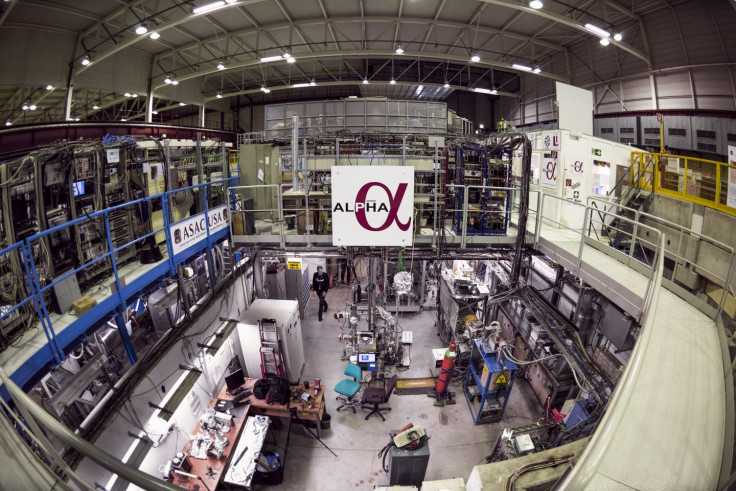CERN Scientists Observe Antimatter Light Spectrum For The First Time

Antimatter. It should be as ubiquitous in the universe as matter is, but for some reason, it’s not. Trying to understand why this is so has occupied some of the best minds in particle physics for decades, and the most likely explanation that they have put forward relates to something known as charge, parity, and time reversal (CPT) symmetry.
CPT symmetry is a central tenet of the Standard Model of particle physics, which describes how three of the four known fundamental forces work. It posits that the laws of physics remain unchanged in a system if three fundamental properties — charge, parity and time — are reversed. Parity refers to a 180-degree flip in spatial configuration.
If a significant violation of CPT symmetry is detected, it would not only hint at the existence of physics beyond the Standard Model, it would also help us understand why the universe is completely devoid of antimatter.
Now, scientists at the European Organization for Nuclear Research (CERN) have, after performing the first-ever measurement of optical spectrum of an antimatter atom, confirmed that these particles behave in a manner consistent with the Standard Model.
For the purpose of this experiment, the researchers associated with the ALPHA collaboration at CERN used antihydrogen atoms — the antimatter equivalent of hydrogen atoms. These particles were created by mixing plasmas of about 90,000 antiprotons with positrons, which are the antimatter equivalent of electrons.
“With its single proton and single electron, hydrogen is the most abundant, simple and well-understood atom in the Universe. Its spectrum has been measured to very high precision. Antihydrogen atoms, on the other hand are poorly understood,” CERN said in a statement released Monday. “Because the universe appears to consist entirely of matter, the constituents of antihydrogen atoms – antiprotons and positrons – have to be produced and assembled into atoms before the antihydrogen spectrum can be measured. It’s a painstaking process, but well worth the effort since any measurable difference between the spectra of hydrogen and antihydrogen would break basic principles of physics.”
However, when the magnetically trapped antihydrogen atoms were hit with a laser beam at the exact frequency needed to excite hydrogen atoms, they behaved exactly as the known laws of physics tell us they would, exhibiting no hints of CPT violation. The illuminated antimatter particles were seen jumping from the lowest energy state — 1S — to the first excited state — 2S.
“The context is to see whether matter and antimatter obey the same laws of physics, which is required by the Standard Model,” ALPHA collaboration spokesman Jeffrey Hangst told BBC. “We've tried to shine the same 'colour' of light, if you will, on an antihydrogen atom that we would use for hydrogen, to see if it responds in the same way. The answer so far is yes.”
The researchers plan to study antimatter light spectrum with higher precision in the coming years with the hope that doing so may provide the answer to a longstanding cosmological conundrum — why is there something rather than nothing in the universe?
© Copyright IBTimes 2025. All rights reserved.





















